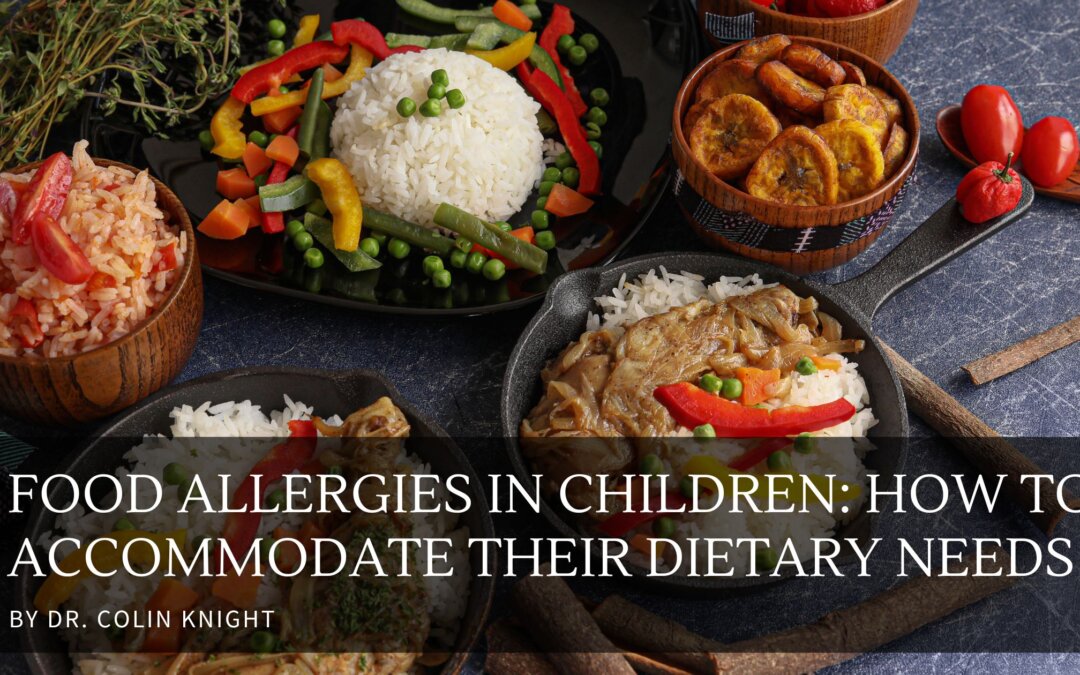Food allergies in children have become increasingly prevalent in recent years, affecting their overall health and well-being. As parents, caregivers, and educators, it is essential to understand how to accommodate the dietary needs of children with food allergies.
Understanding Food Allergies
Food allergies develop when the immune system rejects specific proteins in particular meals. Common allergenic foods include milk, eggs, peanuts, tree nuts, soy, wheat, fish, and shellfish. It is crucial to recognize that even a tiny amount of an allergen can trigger an allergic reaction, ranging from mild symptoms like hives to severe reactions such as anaphylaxis, which can be life-threatening.
Communication and Collaboration
Open communication between parents, caregivers, and relevant stakeholders is vital for accommodating children with food allergies. Parents should inform schools, daycare centers, and other caregivers about their child’s allergies. Collaboration allows for the development of appropriate strategies to manage food allergies effectively.
Reading Food Labels
Thoroughly reading food labels is imperative when catering to children with food allergies. Look for ingredients that might cause reactions, as allergens can often be hidden in processed foods. Familiarize yourself with different names or derivatives of allergenic foods to identify potential risks accurately.
Safe Food Preparation
Preparing food for allergic children in a separate and sanitized environment is crucial to prevent cross-contamination. Avoid using shared utensils or surfaces that may have come into contact with allergens. Educate food preparers about the importance of allergen avoidance and proper cleaning practices.
Nutritious Alternatives
Ensuring a well-balanced diet for children with food allergies is essential. Work closely with a healthcare professional or nutritionist to identify suitable substitutes for allergenic foods. For instance, plant-based milk alternatives or calcium-fortified juices can replace cow’s milk. Nut-free spreads or seed butters serve as substitutes for peanut butter.
Inclusive Social Gatherings
Social events and gatherings often revolve around food, making it essential to accommodate children with food allergies without singling them out. When planning events, consider offering various allergen-free options or labeling dishes to help identify potential allergens. Encourage parents to provide safe snacks or meals for their children, ensuring they feel included and supported.
Education and Awareness
Raising awareness about food allergies in the community can foster empathy and understanding. Schools and educational institutions should train staff and students on recognizing and responding to allergic reactions. Education empowers individuals to take proactive measures and create a safer environment for children with food allergies.
Emergency Preparedness
Developing an emergency action plan is critical in case of an allergic reaction. Ensure that parents, caregivers, and relevant personnel are familiar with the child’s emergency medication, such as epinephrine auto-injectors, and know how to administer them correctly. Regularly review and update emergency plans to accommodate changes in a child’s condition.
Supportive Environment
Creating a supportive environment is critical to the well-being of children with food allergies. Encourage open conversations about allergies, promote a culture of inclusivity, and discourage food sharing to prevent accidental exposure. Encourage children to express their needs and feelings, fostering a sense of acceptance and understanding among peers.
